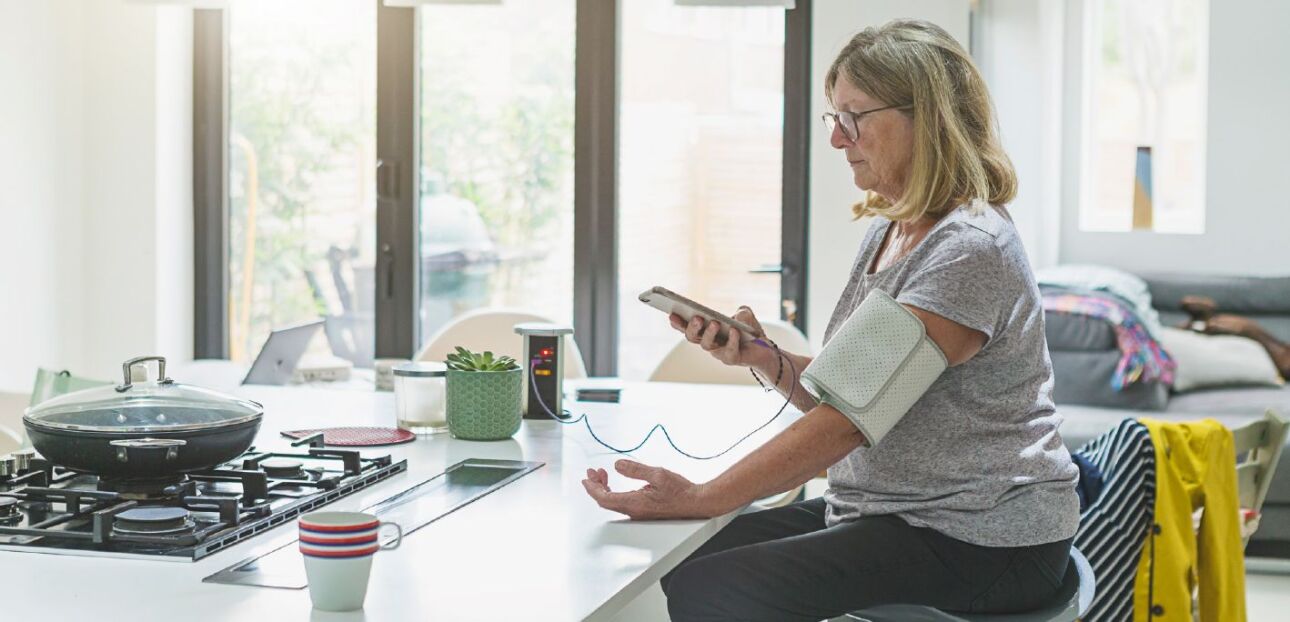
CUSTOMER: Middle East hospital group
CHALLENGES: Enable patients to avoid hospital admission and lengthy stays by receiving acute care at home, supported by up-to-date clinical and demographic information
OUTCOME: In-home monitoring devices with a smartphone app to report current data (in FHIR format) to the hospital EMR and other applications via InterSystems HealthShare Health Connect
A private hospital group in the Middle East is bringing the hospital to patients at home. The care team uses in-home devices to monitor patients and a phone app to deliver device and patient-generated data to its EMR. The physicians and nurses making virtual house calls have all the information they need, using familiar software, for optimal, personalized care.
“Hospital at Home” is a model for delivering acute, inpatient-level care within the patient’s home. It leverages remote monitoring and interoperability as a digital-first practice. Hospital at Home is widely adopted in Australia, England, Finland, Canada, and Israel, and is gaining traction in the US. It provides a level of patient-provider communication and clinical oversight not otherwise possible outside the hospital.
The model is popular with providers and patients as it lowers costs while providing a better experience for patients. It addresses the increase in staffing and financial pressures while meeting consumer preferences for convenience. Studies have documented a consistent pattern of cost savings, lower infection rates, clinical outcomes comparable to inpatient care, and higher satisfaction from patients and family members. One Middle East health organization saw 7-day readmission rates of 4% for at home patients, compared to a nationwide figure of 8% for in-hospital care. 30-day readmission rates were 13% versus 20% for in-hospital care1.
A win-win situation powered by interoperability and data sharing
The hospital group uses InterSystems HealthShare Health Connect to receive data from in-house devices that monitor the patient via the in-home app. The app shares the data in HL7® FHIR® (FHIR) format from the in-home app, transforms it into XML, and then integrates it with the group’s EMR and other hospital systems. Hospital at Home only works when data sharing works, and HealthShare Health Connect makes this possible. For example, it enabled the hospital group to comply with a government mandate to use FHIR for data-sharing without having to implement FHIR support in internal systems that do not yet support it.
In healthcare systems that compete for patients, providing in-home treatment is an attractive benefit that brings in more patients for better care, with lower costs and time savings2. Familiar surroundings, community, and a lower risk of infection for patients makes it a win-win situation for all. Typical use cases for home hospitalization include:
- Orthopedic rehabilitation
- Recovery from heart surgeries
- Diagnostics and consultation pre-surgery
Better data sharing with FHIR
Using HealthShare Health Connect and FHIR interfaces the hospital group was able to quickly establish the Hospital at Home in a way that would otherwise have taken a much larger investment. It uses one external-facing Health Connect instance that communicates with the phone app, and another that connects only to internal systems. It is a secure environment where the group can leverage FHIR and its existing IT assets in new ways, creating a model for future innovation.
To learn more about InterSystems HealthShare Health Connect and FHIR, visit InterSystems.com/HealthShare Health Connect. For more about our role and offerings in healthcare, visit InterSystems.com/healthcare.
1 - Home Hospitalization May Be Solution to Increasingly Crowded Hospitals, May 2019
2 - Home Hospitalization Worldwide, IMAJ, Vol.21, August 2019


































